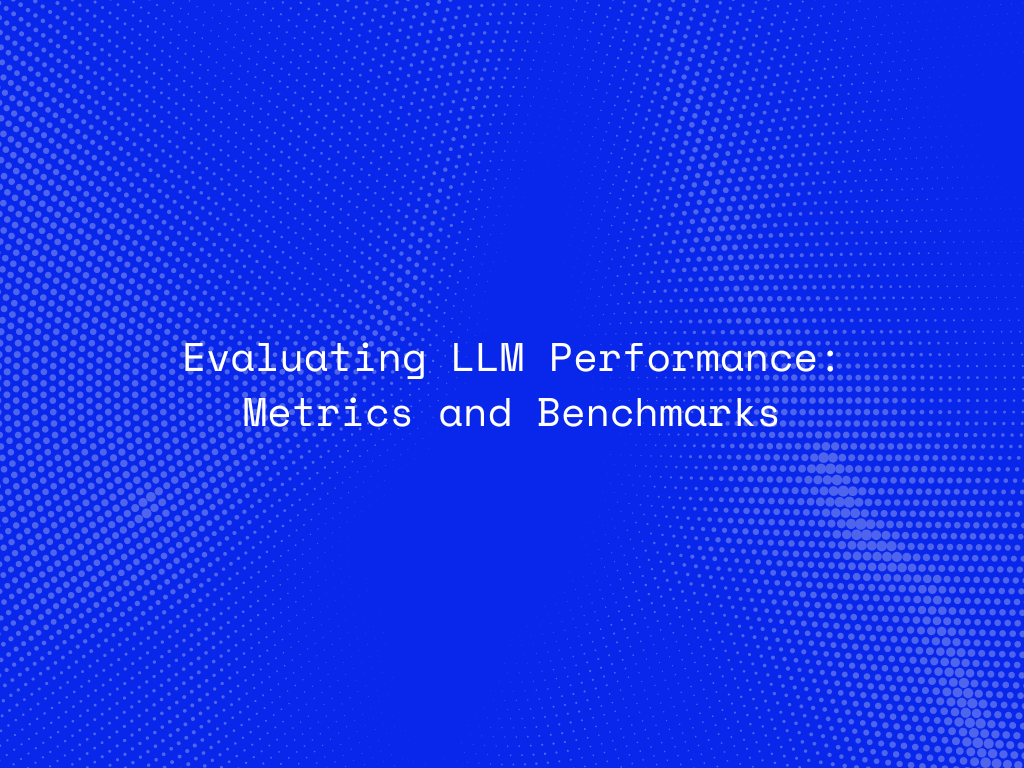Large Language Models (LLMs), such as GPT-4, have demonstrated remarkable capabilities in understanding and generating human-like text. As these models become increasingly integral to various applications, evaluating their performance accurately is crucial. This blog delves into the key metrics and benchmarks used to assess the performance of LLMs, ensuring they meet the desired standards of effectiveness, efficiency, and ethical considerations.
Why Evaluating LLMs is Important
Evaluating the performance of LLMs is essential for several reasons:
- Accuracy and Reliability: Ensuring the model’s outputs are correct and dependable.
- Efficiency: Optimizing the model to perform tasks quickly and with minimal resource consumption.
- Ethical and Safe Use: Identifying and mitigating potential biases, harmful outputs, and ethical concerns.
- Continuous Improvement: Guiding the development of future iterations of the model.
Key Metrics for Evaluating LLMs
1. Perplexity
Perplexity is a measure of how well a language model predicts a sample. A lower perplexity indicates better performance.
- Interpretation: Lower values indicate the model is more confident in its predictions.
2. BLEU Score
BLEU (Bilingual Evaluation Understudy) score assesses the quality of machine-generated text by comparing it to reference translations.
- Range: 0 to 1 (or 0 to 100 in percentage terms).
- Interpretation: Higher scores indicate closer matches to reference texts.
3. ROUGE Score
ROUGE (Recall-Oriented Understudy for Gisting Evaluation) measures the overlap of n-grams between the generated text and reference text.
- Types: ROUGE-N, ROUGE-L, ROUGE-W, etc.
- Interpretation: Higher scores signify better text overlap and quality.
4. Accuracy and F1 Score
These metrics are particularly useful for tasks like classification or question-answering.
- Accuracy: The ratio of correctly predicted instances to the total instances.
- F1 Score: The harmonic mean of precision and recall.
5. Human Evaluation
Human judges assess the quality of model outputs based on various criteria such as coherence, relevance, and fluency.
- Methods: Rating scales, pairwise comparisons, etc.
- Importance: Provides qualitative insights that automated metrics may miss.
6. Ethical and Bias Metrics
Evaluating the ethical implications and biases in LLM outputs is crucial.
- Tools: Bias detection frameworks, fairness benchmarks.
- Goals: Ensure outputs are fair, unbiased, and do not propagate harmful stereotypes.
Connect With Us
Common Benchmarks for LLMs
1. GLUE Benchmark
The General Language Understanding Evaluation (GLUE) benchmark consists of multiple tasks to evaluate a model’s understanding of natural language.
- Tasks: Sentiment analysis, sentence similarity, natural language inference, etc.
- Significance: Comprehensive evaluation of various language understanding capabilities.
2. SuperGLUE Benchmark
An extension of GLUE, SuperGLUE provides more challenging tasks to assess advanced language understanding.
- Tasks: Winograd Schema Challenge, Boolean Question Answering, etc.
- Significance: Higher difficulty level for more sophisticated models.
3. SQuAD (Stanford Question Answering Dataset)
A reading comprehension benchmark where models must answer questions based on a given passage.
- Metrics: Exact Match (EM), F1 Score.
- Importance: Tests the model’s ability to understand and retrieve information from texts.
4. CoQA (Conversational Question Answering)
Evaluates a model’s ability to answer questions in a conversational context.
- Metrics: F1 Score, turn-level accuracy.
- Importance: Measures the model’s contextual understanding and dialogue capabilities.
5. LAMBADA
A benchmark for assessing a model’s ability to predict the last word in a sentence, testing its broader context understanding.
- Task: Cloze-style prediction.
- Significance: Challenges the model’s long-range dependency comprehension.
Challenges in LLM Evaluation
1. Ambiguity in Language
Language is inherently ambiguous, making it difficult to evaluate LLMs based on a single correct answer.
2. Context Sensitivity
LLMs need to maintain coherence over long contexts, which is challenging to measure accurately.
3. Ethical Considerations
Ensuring models do not produce harmful or biased content requires sophisticated and nuanced evaluation metrics.
4. Dynamic Benchmarks
As models evolve, benchmarks must also be updated to reflect new challenges and tasks.
Conclusion
Evaluating LLM performance is a multifaceted task that involves a combination of quantitative metrics and qualitative assessments. By understanding and applying the right metrics and benchmarks, we can ensure that these models are not only effective and efficient but also ethical and reliable. As the field of AI continues to advance, ongoing evaluation will be key to harnessing the full potential of LLMs while mitigating their risks.
What are your thoughts on LLM evaluation? Share your comments and join the discussion below!




